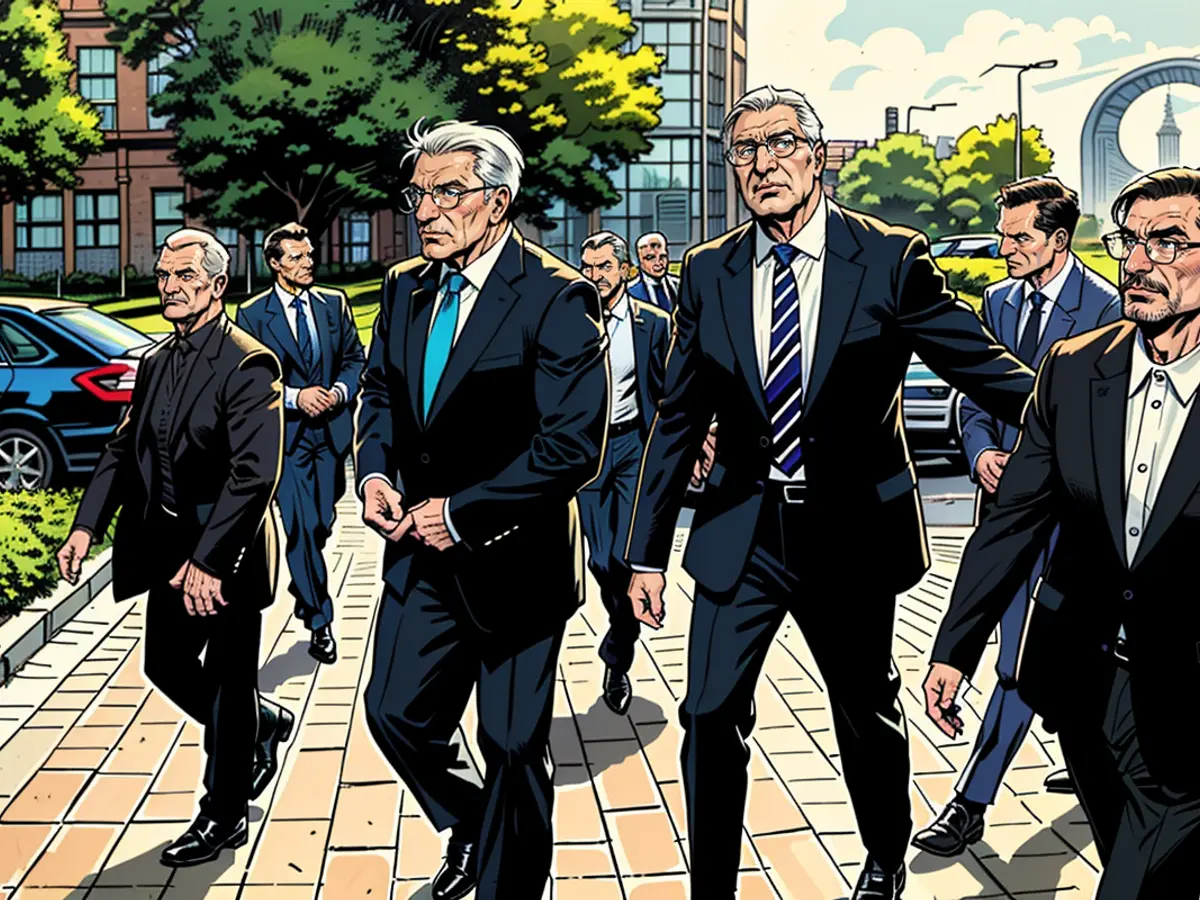South Brandenburg Journey - Federal President's Visit in Lusatia: Life Disrupted by Change
President Steinmeier views the shift in Lusatia with the upcoming coal phase-out as a substantial makeover that entails the participation of its people. He emphasized during his visit to Lusatia with over 100 diplomats that the transition through coal termination by 2038 could only succeed if it doesn't inflict intense changes that people experienced in the 1990s. This process includes more than just adjusting to a different method of conducting business and earning a living; it also influences mentalities, traditions, and lifestyles.
President Steinmeier took a trip to the Brandenburg University of Technology Cottbus-Senftenberg, where they research eco-friendly energy sources, and the Park Branitz in Cottbus and the Spreewald. Lusatia, located in Brandenburg and Saxony, is known as an exemplary region undergoing structural alterations, receiving 10 billion euros in federal funding explicitly for the Brandenburg area.
Steinmeier: Economic transformation a "lengthy process"
Recognizing the numerous unknowns associated with this shift, engaging the people in the coal phase-out and energy transition is essential to President Steinmeier. "Everyone is pondering how to go about this, how to gain the populace's support," Steinmeier noted to the German Press Agency. "It's a lengthy process, and it's well known that it's particularly true in Brandenburg."
Federal President: Berliners are uninformed on Brandenburg's accomplishments
President Steinmeier commended the progress made by the region during a time of change, citing its inventive mindset and dedication to its transformation. "This creativity and passion for the new are not yet well understood by Berliners," he added. The majority of Berliners consider the area as a hub for weekend getaways or a summer lakeside visit, neglecting all Brandenburg has to offer in terms of transformation.
Brandenburg's Minister-President Dietmar Woidke (SPD) deemed Lusatia "probably the most dynamic region in Germany." Lusatia encompasses economic development alongside climate protection and will continue serving as an energy and industrial center even after the termination of brown coal.
Cottbus is also associated with right-wing extremism. The AfD, a right-wing extremist concern, notched impressive results in southern Lusatia during the European election, even reaching 50% in certain locales.
Key stops for the diplomats' tour of Lusatia included the Brandenburg University of Technology Cottbus-Senftenberg (BTU), where Steinmeier examined the ins and outs of a 3D printer and VR glasses, meant to assess public acceptance of the energy transition. The diplomats enjoyed a green bean salad, pikeperch with potatoes, and Prince Pückler ice cream, a treat named after the creator of the Branitzer Park, during their time at the Branitz Park, formerly a sand desert. Later in Lubbenau, Steinmeier took the group on a boat trip through the Spreewald, and to conclude the journey, a reception at Schloss Lubbenau was arranged.
Read also:
- President Steinmeier highlighted the importance of involving the people in the coal phase-out and energy transition in Lusatia, a region known for its lakes, including the popular Spreewald.
- During his visit to Brandenburg University of Technology Cottbus-Senftenberg and other key locations in Lusatia, Steinmeier emphasized the need for Diplomacy and international cooperation in the process, recognizing the challenges and unknowns associated with the shift.
- The Federal President praised the progressive mindset and dedication to transformation in Brandenburg, expressing his belief that its accomplishments were not fully understood or acknowledged by Berliners.
- Lusatia, located in both Brandenburg and Saxony, has received significant funding, including 10 billion euros, to support its structural changes and transition towards a more sustainable future, focusing on Universities, clean energy, and industrial development.
- Despite facing challenges such as right-wing extremism, as evidenced by the strong performances of the AfD in southern Lusatia, the region has become an exemplary model of Upheaval and adaptation, paving the way for a more sustainable future.
- Steinmeier and the group of diplomats visited various sites in Lusatia, including the Brandenburg University of Technology Cottbus-Senftenberg, where he engaged with cutting-edge technology like 3D printers and VR glasses, as a means of gauging public acceptance of the energy transition.
- In the 1990s, the region experienced substantial change, which serves as a reminder that the current transition towards a coal-free future would likely present similar challenges to those faced during that period.
- After exploring Branitz Park and savoring traditional local cuisine, the diplomats embarked on a boat trip through the Spreewald, further immerse themselves in the beautiful landscapes of Lusatia.
- As the Federal President, Frank-Walter Steinmeier continues to champion this change, pushing for a balanced approach between economic growth, climate protection, and promoting Brandenburg's unique qualities on both national and international platforms.








